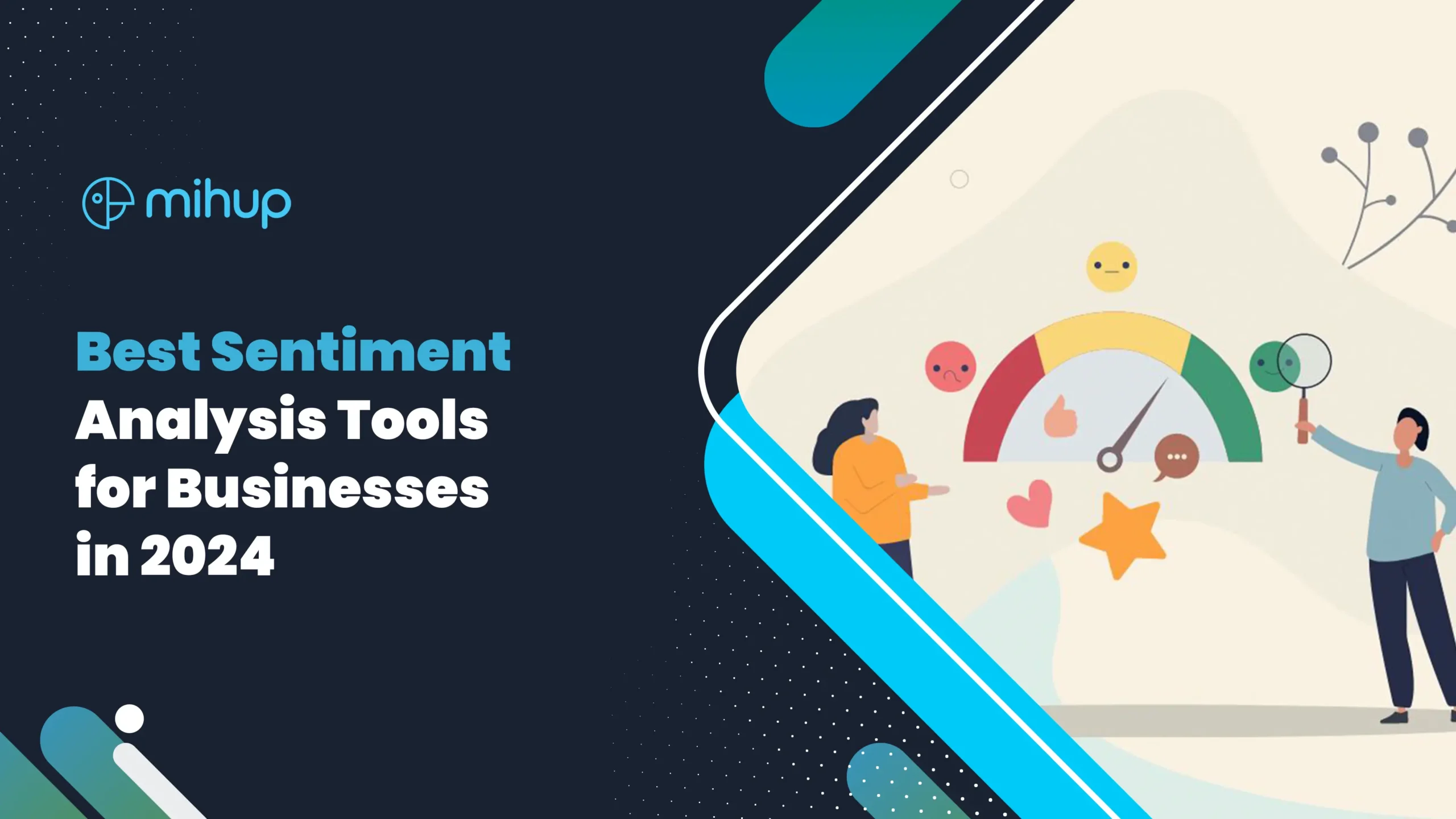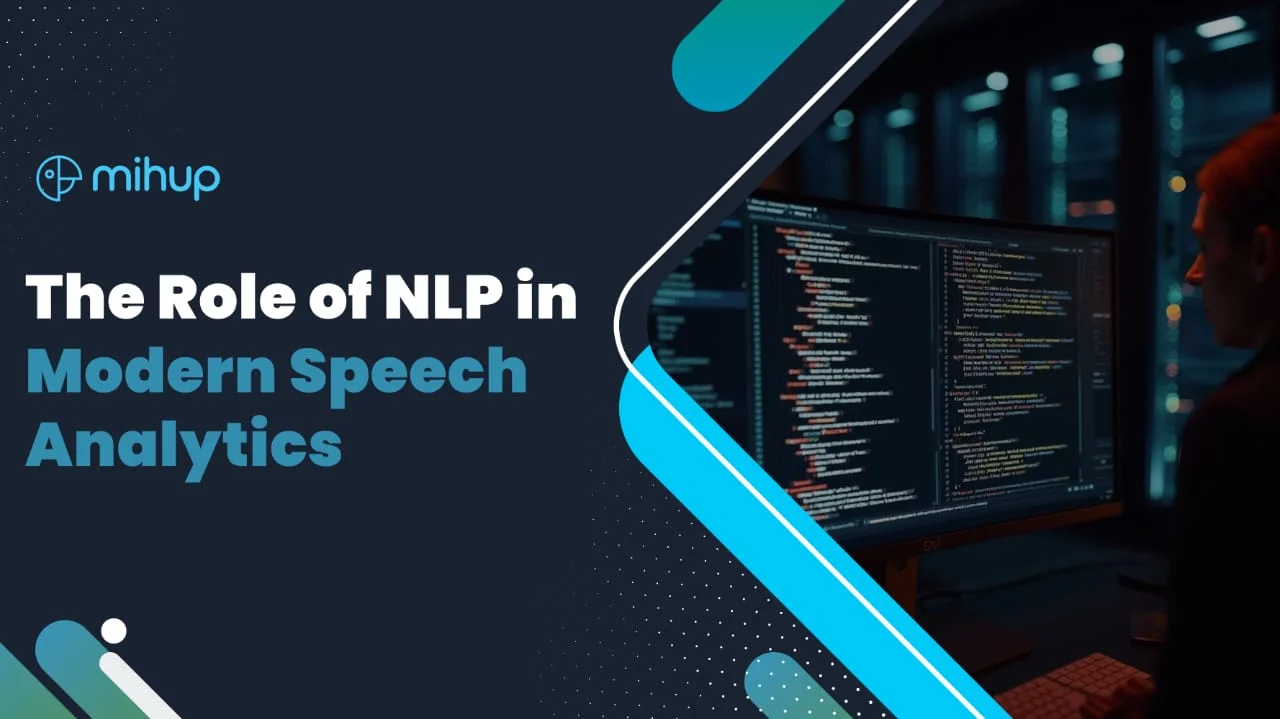In this digitally evolving business world, understanding customer emotions has become more important than ever. Sentiment analysis is a powerful tool that helps businesses tap into how their customers feel—whether it’s through a phone call, text message, or social media post. By gauging these sentiments, companies can better connect with their audience and drive growth.
With the constant flow of customer feedback and opinions coming from every direction, it can be overwhelming to make sense of it all. This is where sentiment analysis tools come into play, streamlining the sentiment analysis process and making it easier for businesses. These smart, AI-driven solutions analyze text and conversations, turning raw data into meaningful insights about customer feelings and perceptions.
In this article, we’ll walk you through the best sentiment analysis tools for 2024. We’ll highlight their unique features and show you how they can empower your business to better understand and respond to customer sentiments. Whether you’re looking for real-time sentiment analysis or specific customer sentiment analysis tools to dive deeper into feedback, this guide will help you find the right fit for your needs.
Enhance Your Decision-Making with Mihup’s Powerful Sentiment Analysis Technology!
What is Sentiment Analysis?
Sentiment analysis is the process of using artificial intelligence (AI) and natural language processing (NLP) to understand and interpret emotions expressed in both written and spoken language. In today’s business landscape, it’s crucial to analyze not just text—like customer reviews and social media posts—but also conversational data from sources such as phone calls, chat interactions, and voice messages.
By capturing and analyzing these conversations, businesses can gain deeper insights into how customers feel about their products and services. Are they satisfied with their experience? Are there underlying frustrations that need addressing? Sentiment analysis helps answer these questions by classifying sentiments as positive, negative, or neutral, revealing valuable emotional insights. Understanding the emotional nuances in conversations can lead to more personalized experiences, ultimately driving customer loyalty and satisfaction.
How does Sentiment Analysis work
Conducting sentiment analysis may seem complex, but it can be broken down into a straightforward process. Follow these steps to conduct sentiment analysis effectively
- Define Your Objectives: Start by determining what you want to achieve with sentiment analysis. Are you looking to gauge customer satisfaction, monitor brand reputation, or identify areas for improvement? Defining clear objectives will help you guide your analysis.
- Data Collection: Gather data from various sources, focusing on conversational data. This can include transcriptions from customer service calls, chat logs, social media interactions, and email exchanges. The more diverse your data, the richer your insights will be.
- Data Preprocessing: Clean and organize your data to prepare it for analysis. This step may involve:
- Transcribing audio data into text format.
- Removing irrelevant information (like filler words) and normalizing the text (such as converting all text to lowercase).
- Filtering out stop words (common words like “and,” “the,” etc.) that don’t contribute to sentiment.
- Sentiment Classification: Utilize AI tools for sentiment analysis to classify the sentiments expressed in your data. These tools can analyze the text for emotional cues, keywords, and phrases, categorizing the sentiments into positive, negative, or neutral.
- Interpretation and Visualization: Once the sentiments are classified, interpret the results. Look for trends and patterns in customer interactions and feedback. Use visualization tools to present the data in a clear and impactful way—charts, graphs, and dashboards can help stakeholders grasp the insights quickly.
- Actionable Insights: Finally, derive actionable insights from your analysis. Identify specific areas for improvement or strengths to build upon. Use these insights to refine your strategies, enhance customer experiences, and address any concerns that may have arisen from the analysis.
Refine your Strategies with Mihup’s Sentiment Analysis!
Sign For FREE DEMO
Understanding the various types of sentiment analysis can help businesses choose the right approach.
- Fine-Grained Sentiment Analysis: This method assesses sentiment at different levels—sentence, aspect, or entity—allowing businesses to identify feelings about specific features.
- Emotion Detection: This approach identifies specific emotions like happiness, anger, or sadness, providing deeper insights into customer sentiments beyond positive or negative.
- Aspect-Based Sentiment Analysis: Focused on sentiments related to specific aspects of a product or service, this analysis helps pinpoint strengths and areas for improvement.
- Multi-Class Sentiment Analysis: Instead of a simple positive/negative classification, this method includes varying degrees of sentiment, offering a nuanced understanding of customer opinions.
- Sentiment Trend Analysis: This type tracks sentiment over time, helping businesses identify trends and assess the impact of changes like marketing campaigns or product launches.
- Real-Time Sentiment Analysis: Monitoring customer interactions as they happen, this method enables quick responses to feedback, enhancing customer engagement.
Let’s Explore the Best Sentiment Analysis Tools for 2024
As businesses look to leverage customer insights, choosing the right sentiment analysis tools is essential. Here are some of the best sentiment analysis tools for 2024, with their key features:
Hootsuite
Hootsuite automates sentiment analysis for social media, extracting emotions and opinions from posts and comments.
Key Features: Social media scheduling, analytics dashboards, sentiment monitoring.
Mihup.ai:
Mihup.ai offers real time sentiment analysis that harnesses the power of artificial intelligence (AI) and machine learning (ML) to extract valuable insights from customer feedback and online discussions. It includes two powerful components: MAA (Mihup Agent Assist) for real-time feedback and real-time cues for agents, and MIA (Mihup Interaction Analytics) for comprehensive dashboards that provide 100% analytics of calls and chats.
Key Features: Real-time sentiment analysis, Mihup Agent Assist (MAA) for agent support, Mihup Interaction Analytics (MIA) for detailed interaction analytics, and integration with CRM and customer service platforms.
MonkeyLearn:
MonkeyLearn is a cloud-based text analysis platform that leverages machine learning and natural language processing (NLP) to perform sentiment analysis and extract valuable insights from textual data.
Key Features: Customizable sentiment models, integration with platforms like Zapier and Google Sheets, and support for multiple languages.
RapidMiner:
RapidMiner is a comprehensive data science platform that offers sentiment analysis tools, designed to be user-friendly and intuitive.
Key Features: Drag-and-drop interface, predictive analytics, support for various data sources
TextBlob:
TextBlob is a user-friendly Python library designed for text analysis tasks, including sentiment analysis.
Key Features: Support for English and non-English text, for custom analysis, Easy to use.
Tone Analyzer by IBM Watson:
IBM’s Tone Analyzer analyzes text to detect various emotional tones, such as joy, anger, and sadness.
Key Features: Advanced NLP capabilities, API integration, sentiment scoring.
Brandwatch
Brandwatch is a robust social listening platform that enables businesses to track their online reputation and presence effectively. It goes beyond simple brand mention tracking on social media by integrating advanced sentiment analysis features.
Key Features: Real-time monitoring, identification of key influencers, and competitive analysis.
Brand24
Brand24 is a comprehensive tool for monitoring social media, designed to help businesses stay informed about their online reputation and presence. Its sentiment analysis capabilities offer valuable insights into how the brand is perceived in the digital realm.
Key Features: Instant alerts, sentiment tracking, influencer identification.
These customer sentiment analysis tools offer a variety of features to meet different business needs, whether you’re focused on call monitoring or deep text analytics. No matter if you’re a data scientist, marketer, or business owner, there’s a tool out there that’s perfect for you, ready to help you unlock valuable insights from your data.
What sets Mihup.ai apart is its user-friendly experience, making it the ideal choice for organizations that want to transform customer feedback and call conversations into actionable insights using an effective sentimental analysis tool.
Curious about how our sentiment analysis tool can make a difference for your business? Reach out to us today, and we’d love to show you firsthand how we can help you better understand your customers’ sentiments.
Understand Your Customers Better—Get Started with Mihup’s Sentiment Analysis!
Disclaimer:
This compilation is based on personal research and experiences, incorporating information from online sources like web articles and Google Search rankings. The order of listing does not signify any specific ranking and is intended to serve as a reference guide.





